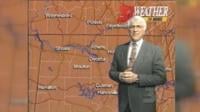Why are cities so much warmer than neighboring rural communities? Ãå±±ÂÖ¼é Meteorologist Grace Anello has the answer in this week's "Anello Answers It"!
This week on "Anello Answers It," Ãå±±ÂÖ¼é Meteorologist Grace Anello dives into the scientific reason why cities and downtown areas are often significantly warmer than their more rural neighbors.
This phenomena is called the Urban Heat Island Effect. Essentially, buildings, cars, asphalt surfaces and industrial emissions in a city not only emit heat but also retain it.
This heat becomes trapped in a pseudo-bubble over the city, keeping conditions steamy.
In addition to cities acting as personal heaters, they also lack the ability to naturally cool off. More rural areas tend to have more trees, foliage and shade.
All of these factors aid in evapotranspiration, or water movement from the surface to the atmosphere. Evapotranspiration is a cooling process that aids in rural areas being able to maintain a more pleasant temperature.

Urban Heat Island
Therefore, densely populated cities artificially self-heat and lack the ability to self-cool. That's why, if you live in a populated city, you might be feeling significantly warmer than others in a more rural neck of the woods.
Got a weather question you want answered? Email ganello@waaytv.com!
Find more episodes of "Anello Answers It!" here.














